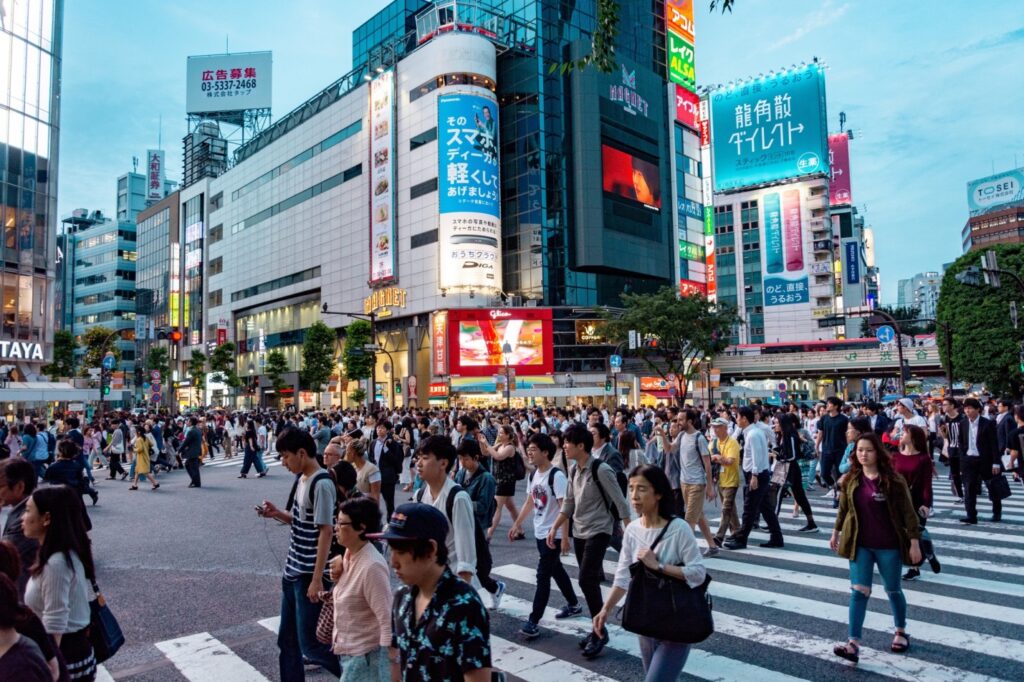Read on to discover the best ways of getting around Japan without getting lost and spending all your money on transportation.
There’s no way of sugar-coating it, Japan is an expensive country to visit, no matter what currency you’re traveling on.
But despite this, exploring Japan is not out-of-reach for travelers on a budget. There are a number of ways to enjoy this country with a tighter budget, you just need a little travel savvy advice.
For more on getting around Japan in terms of public transport, check out the rest of this blog for money-saving tips.
Getting Around Japan With an IC Card
Japan is a relatively small country so it’s not that difficult to travel from one side to the next. However, the country’s transportation infrastructure is geared on two levels: fast and expensive or slow and affordable.
The best way to explore Japan is by purchasing an IC card. This is a prepaid travel card that is microchipped to work on subways, trams, and buses in all major cities. These include Tokyo, Kansai, Sapporo, Niigata, Nagoya, Okayama, Hiroshima, and Fukuoka metro areas. IC cards cannot be used for intercity travel i.e. to get from one city to the next.
Two of the most popular IC cards are the Suica Card from JR East and the Icoca Card, from JR West. You can purchase both of these IC cards from JR travel counters at Haneda, Narita, and Kansai airports.
Bus Transportation
All Japanese cities are equipped with public bus systems, however, they are not highly recommended for tourists. Perhaps with the exception of Kyoto. Most major cities include a loop that stops at all the main sights, beginning and ending at the city’s train station hub.
Expect to pay a flat fare for all city busses. This is one of the cheapest ways to explore major cities in Japan. But it is by no means the fastest. Intercity bus route fares are calculated based on distance. It will cost you less, but this also a slow means of transport between cities.
Taxi Transportation
Taxis are a dime-a-dozen in the larger cities, as you’d expect. However, they can be found in smaller cities and even on the islands surrounding Japan mainland, too.
Taxis are available for order from taxi stands, your hotel, or you can simply hail one directly from the curb. Otherwise, the JapanTaxi app makes it easy to pre-book taxis.
You can expect to pay a pretty standard taxi fare across the country, which is usually metered. Flagfall rates vary. But it’s usually ¥600 for the first 2km, and ¥100 for every 350m thereafter. These rates can change from one city to the next. The larger the city, the higher the flagfall rate will be.
A top tip: Japanese taxi drivers rarely speak any form of English. It’s a good idea to have your destination written down in Japanese before entering the taxi.
Subway Transportation
Subways operate throughout all major Japanese cities. This usually the fastest, most reliable means of traveling across each city. Some metro areas are also linked by a network of JR and private rail lines.
The great news is that most subway line names are written in English. On average, you can expect to pay between ¥160 to ¥200 per train ride. For short city stays, get yourself an unlimited travel ticket, known as an ichi-nichi-jōsha-ken. Otherwise, an IC card is recommended for stays longer than two days.
Keep Your Cool While Traveling
Getting around Japan is a relatively simple process, given the country’s first-world status and high level of efficiency. But it’s best to make the most of travel passes where possible!
Looking for more tips on global travel? Don’t miss out on the rest of this blog for plenty of advice…

